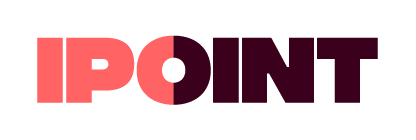Substances of Very High Concern (SVHCs) remain a critical compliance challenge for companies operating in the European Union. With the REACH regulation's candidate list now exceeding 251 substances – and growing twice yearly – businesses face mounting pressure to track, report, and manage these chemicals across increasingly complex supply chains.
Thus, SVHC management becomes vital for business continuity. Missing or incorrect supplier data can delay production, impact launches, and risk customer approvals — especially in automotive, electronics, and manufacturing.
This guide breaks down everything you need to know about SVHC compliance: from understanding what these substances are and where they may be embedded in your products, to mastering your reporting obligations and building an efficient compliance program that scales with your business.
Table of Contents
What Are SVHCs?
Substances of Very High Concern (SVHCs) are chemicals that pose serious risks to human health and the environment. The European Chemicals Agency (ECHA) identifies these substances based on specific hazard criteria, placing them on the SVHC candidate list for enhanced regulatory control.
SVHC substances share dangerous properties that justify their special status under REACH (Registration, Evaluation, Authorisation and Restriction of Chemicals). These include:
- Carcinogenic, mutagenic, or reprotoxic (CMR) – affecting human health directly
- Persistent, bioaccumulative and toxic (PBT) – accumulating in organisms and ecosystems
- Very persistent and very bioaccumulative (vPvB) – remaining in the environment indefinitely
- Endocrine disrupting – interfering with hormonal systems in humans or wildlife
The REACH SVHC list grows continuously through bi-annual updates each June and December. ECHA typically adds new substances based on member state proposals and scientific evaluation, triggering immediate compliance obligations across supply chains.
Before each update, ECHA also publishes proposals for the identification of new SVHCs submitted by EU Member States or the agency itself. Monitoring these SVHC proposals helps companies assess potential future impacts early and prepare their compliance documentation in advance.
Key Regulations Impacting Substances of Very High Concern
SVHC compliance centers on the REACH regulation, but extends beyond basic substance tracking. The regulatory framework creates cascading obligations that affect sourcing, manufacturing, and product sales throughout the EU.
REACH as the Foundation
EU REACH SVHC requirements establish the core legal framework for managing these hazardous substances. When articles contain SVHCs above 0.1% by weight, specific communication and reporting duties activate automatically.
The regulation's influence extends globally through trade relationships and regulatory harmonization. UK REACH maintains parallel substance lists, while Turkey's KKDIK and Korea's K-REACH adopt comparable SVHC tracking requirements.
Integration with Waste Legislation
The SCIP database bridges chemical and waste management regulations. This connection ensures hazardous substance information follows products through their entire lifecycle – from manufacturing to disposal.
Automate Your REACH Compliance

Navigate complex SVHC obligations with confidence using IPOINT's proven compliance platform. Streamline supplier communication, automate reporting workflows, and stay ahead of regulatory updates.
Who Needs to Comply with SVHC Requirements?
SVHC compliance obligations vary based on your role in the supply chain and geographic location. Understanding your specific responsibilities determines which systems and processes you need to implement.
EU-Based Companies
Manufacturers or importers within the EU bear primary responsibility for SVHC tracking and communication. If you produce or import articles containing these substances, you must establish systems for supply chain communication and regulatory reporting.
When an SVHC is present above 0.1 % by weight and the total quantity exceeds 1 tonne per year, you must also notify the European Chemicals Agency (ECHA) in accordance with Article 7(2).
Distributors and retailers face lighter obligations but still need awareness of SVHC substances in their product portfolios, particularly for customer inquiries and waste disposal considerations.
Non-EU Companies
Companies outside the EU cannot directly fulfill REACH SVHC obligations. Instead, they must appoint an Only Representative (OR) based in the EU to handle compliance duties including communication requirements, SCIP notifications, and regulatory correspondence with ECHA.
This arrangement transfers the importer’s legal responsibilities to the OR and ensures continued market access and compliance for global businesses selling into European markets.
Compliance Obligations for SVHCs – and Their Impact on Business and Supply Chains
Managing Substances of Very High Concern (SVHCs) involves more than just staying on the right side of the law. There are four core compliance duties, each touching different parts of the business and supply chain. For manufacturers, engineers, and procurement teams, staying ahead of these requirements is essential—not just to meet regulations, but to keep operations running smoothly and avoid customer pushback in heavily regulated sectors.
Article 33 Supply Chain Communication
If an article contains an SVHC above 0.1% by weight, you’re required to inform downstream recipients within 45 days. This isn’t just a one-off task—it requires consistent supplier collaboration and structured communication processes with customers. That includes disclosing the substance name, concentration ranges, and safe usage guidance. Given today’s supply chain complexity, digital tools are increasingly vital for managing these workflows.
Article 7(2) – Notifying ECHA
Companies must notify ECHA when an SVHC exceeds 0.1% by weight and totals over one tonne per year per manufacturer or importer. This step ensures transparency and enables regulators to assess potential risks tied to substances circulating within the EU market.
SCIP Database Reporting
Since 2021, companies have been required to report SVHC content to the SCIP database. Unlike Article 33, SCIP demands more granular details—such as where substances are located in a product, what materials are used, and how to handle them at end-of-life. This ensures both recyclers and consumers have access to critical safety data.
Authorization and Restriction Pathways
Some SVHCs are subject to increasing restrictions. If a substance moves to REACH Annex XIV, companies need to demonstrate safe use or substitution efforts to maintain authorization. Under REACH Annex XVII, certain uses may be limited—or outright banned.
Non-Compliance Risks
Non-compliance with REACH isn’t just a regulatory issue—it’s a business risk. Penalties can reach millions, and violations may block product sales or strain customer relationships. For companies in compliance-heavy industries, the cost of falling behind can far exceed the cost of staying ahead.

Streamlining SVHC Compliance with IPOINT
Managing SVHC data across complex supply chains demands systematic automation and integration. iPoint's comprehensive platform addresses every aspect of SVHC compliance through connected digital solutions.
REACH Compliance Software
Our REACH Compliance Software centralizes SVHC tracking, supplier communication, and regulatory reporting. The platform handles Article 33 notifications and multi-jurisdiction requirements through automated workflows and real-time regulatory updates.
SCIP Compliance Reporting
IPOINT's SCIP Compliance Reporting solution streamlines database submissions with pre-validated templates and automated data transfer. Built-in quality checks ensure accuracy while reducing manual preparation time.
Product Compliance Integration
Our Product Compliance software platform connects SVHC management with broader regulatory requirements including REACH, RoHS, California Proposition 65, TSCA and emerging sustainability regulations. This integration eliminates data silos while providing comprehensive compliance oversight.
Key Benefits
Our tools simplify SVHC compliance by automating routine tasks, providing real-time regulatory updates, and facilitating seamless supplier engagement. Companies gain audit-ready documentation, reduced administrative overhead, and scalable workflows that grow with business requirements.
With integrated ERP and PLM connectivity, SVHC compliance becomes embedded within existing product development processes rather than operating as a separate compliance burden.
Frequently Asked Questions
What is SVHC compliance?
Who must comply with SVHC regulations?
EU-based manufacturers or importers must comply directly with SVHC regulations when their products contain SVHC chemicals. Non-EU companies selling into Europe must appoint an Only Representative to handle REACH SVHC obligations. Distributors and retailers have lighter duties but need awareness of SVHC substances in their products for customer inquiries.
How do I stay up-to-date with the SVHC list?
The SVHC Candidate List is updated twice a year by ECHA, typically in January and June. You can monitor ECHA’s official website or subscribe to their newsletter for direct notifications. For ongoing insights and update summaries, visit our Newsroom, where we regularly report on new SVHC additions and their impact on product compliance. Digital compliance platforms can also provide real-time alerts and automatically assess how new substances affect your product portfolio.





.png)

